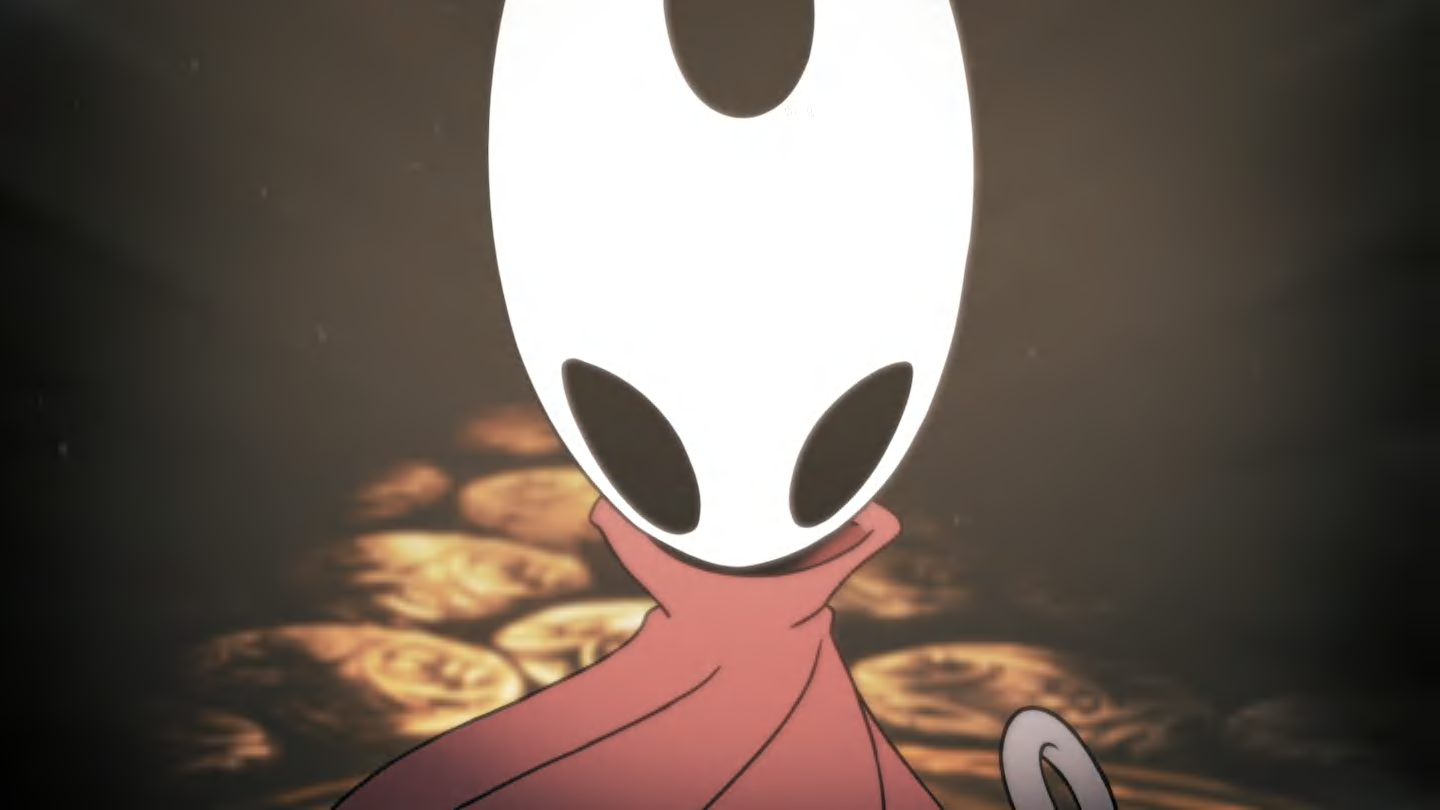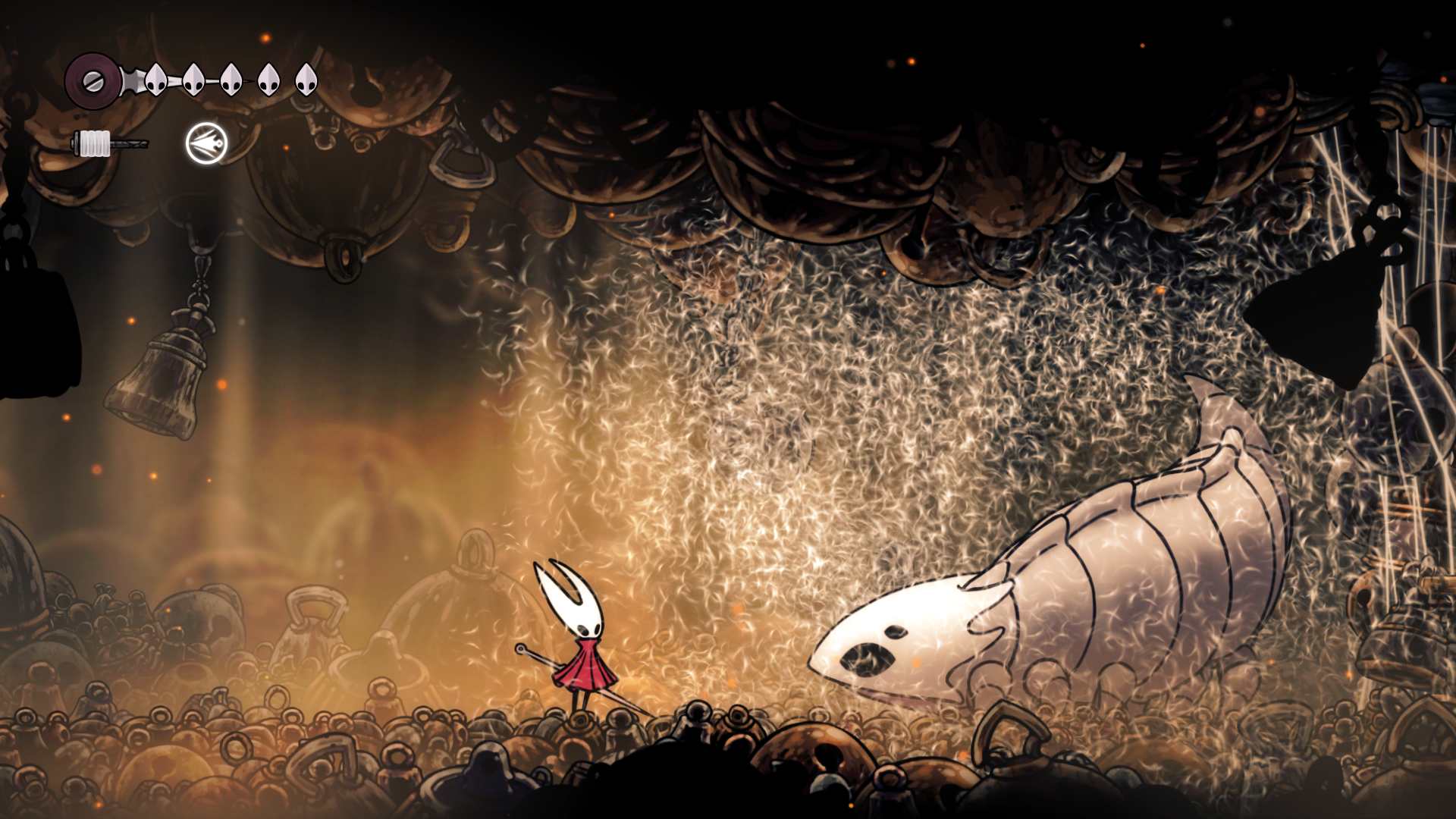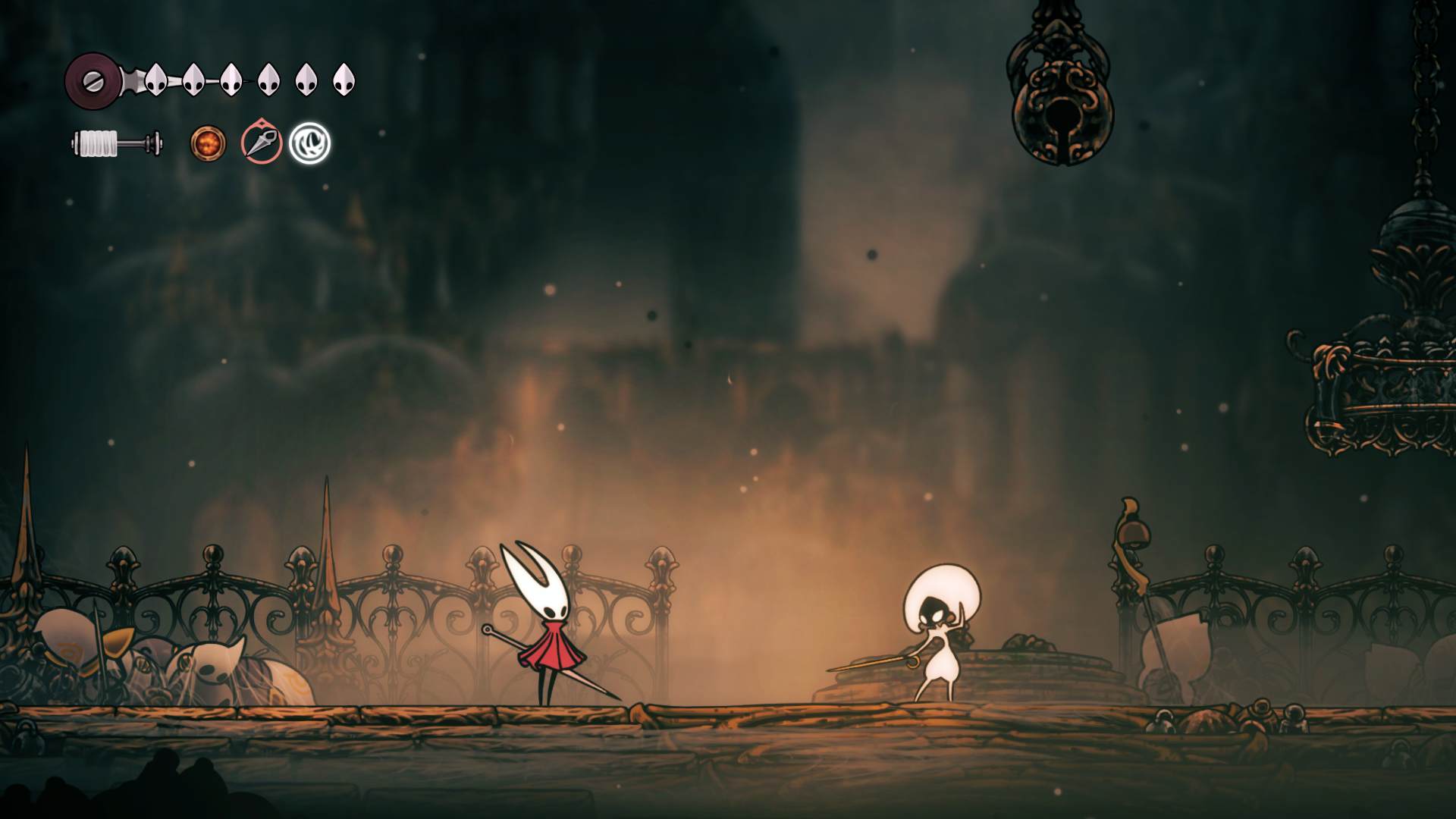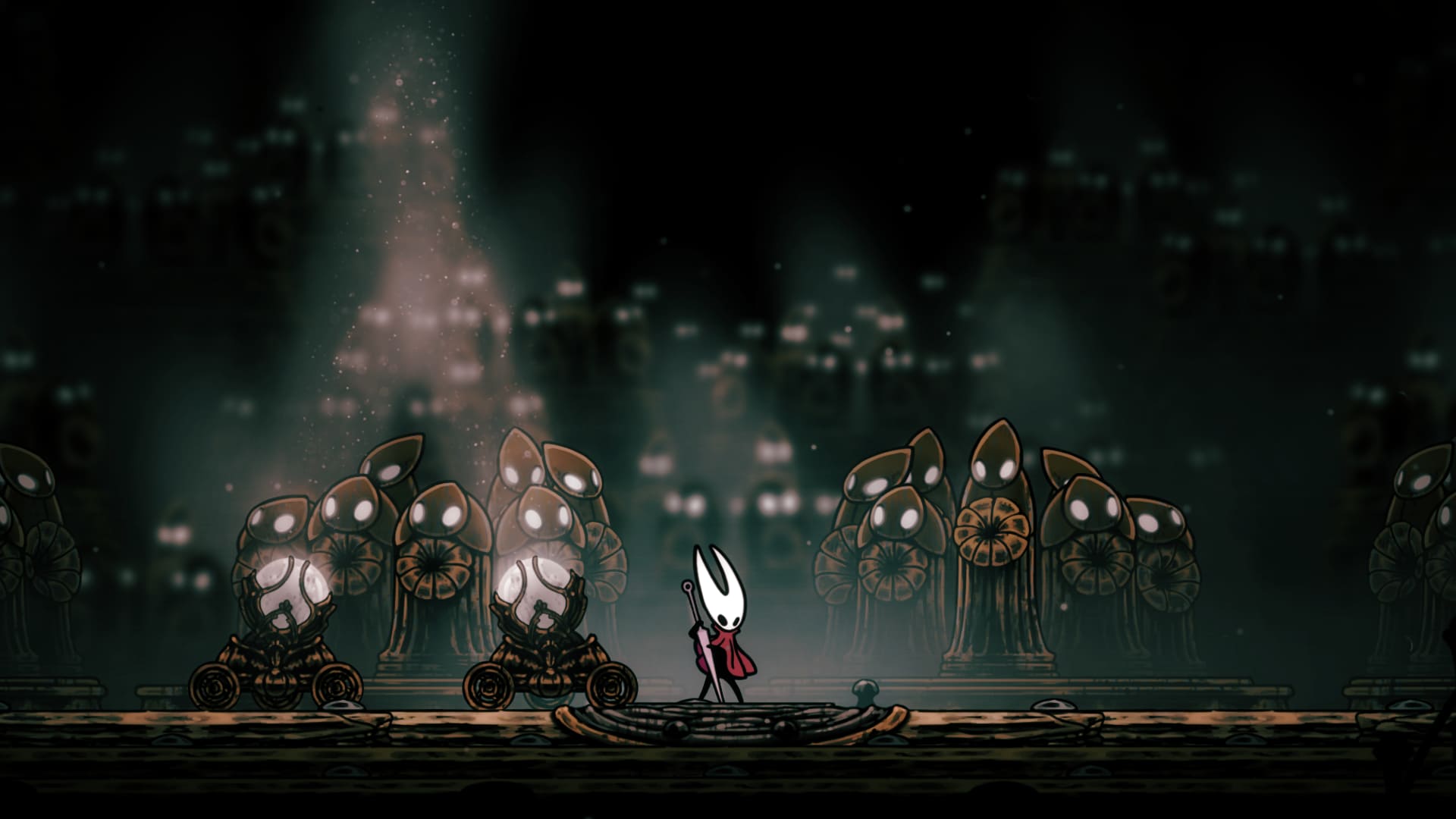
It’s tough to follow up a massive success like Hollow Knight, and even harder when expectations get incredibly high. Many larger development teams have failed under that kind of pressure. However, the creators of Hollow Knight: Silksong didn’t try to cater to everyone. Instead, they spent seven years focused on their original vision – a sequel that improves upon everything fans loved about the first game while also introducing new ideas.
As soon as I started playing, it felt amazing – just like coming home! It totally *gets* what made the first game so good and brings that same feeling back, but it’s not just a repeat. They’ve added a ton of surprises and shaken things up in really fun ways.
The game’s hand-painted art looks even better now. While the world of Pharloom is often gloomy, it still feels surprisingly full of life. Every strange creature you encounter is charmingly animated, and the environment reacts to your actions. Even though the atmosphere is often heavy, you’ll stumble upon beautiful areas like lush mossy patches and golden cities, which makes the darker sections feel even more intense.
Hornet’s fighting style feels both familiar and fresh. While the core combat system remains the same, her unique attacks require a slightly different approach. Her basic attacks reach a little further in all directions, giving you more options for hitting enemies. Plus, instead of diving straight down, she dives diagonally. Some players find this frustrating – and a slightly larger hit area would be helpful – but I like that it’s a risky move. Landing it deals good damage and quickly puts distance between you and your opponent, but missing can leave you vulnerable.

Sometimes the game feels overly challenging or unfair. While Hollow Knight was known for being difficult, and Silksong didn’t promise to be easy, some of the combat changes can be frustrating. For example, bosses now deal double damage, which is particularly tough early on when your health is limited. I don’t dislike the idea entirely, but the first few bosses could have been a bit more forgiving. Even later in the game, some unavoidable fights throw a huge number of enemies at you at once. The beautiful, detailed graphics can actually make these chaotic battles hard to follow, and fights where you have an ally can feel unfair. One section, called the High Halls gauntlet, was especially frustrating – you fight a difficult mini-boss, only to realize that was just the first half, and then you have to fight two of them simultaneously. It felt needlessly difficult.
However, the game balances these changes with significant updates to how you manage mana and heal. Instead of traditional mana, Hornet collects spools of silk by attacking enemies. A full spool lets her heal, and unlike the first game where healing required being on the ground for just one health point, Hornet can heal three health points anywhere – even while airborne. This is important because enemies are tougher and more relentless, and the new healing system gives you more chances to find brief moments of safety to recover health.
The change makes boss fights feel faster and more dynamic, with less pausing. Previously, bosses had to create openings for you to heal, but now that you can heal in more places, they can stay on the attack constantly. It’s your job to find the right moments to strike during their attacks. This is particularly noticeable later in the game, where bosses are very fast and have many different attacks, requiring quick reactions and precise timing to counter them.
The boss battles are better than ever, offering a wide range of challenging encounters both within the main story and hidden throughout the game world. You’ll face everything from gigantic monsters many times larger than before, to quick, agile enemies that move just like you, and even groups of enemies who work together but fight on their own.

Honestly, one of the things I’m most excited about in Silksong is how much more story they’re putting into the boss battles. It’s not just the big, epic fights either – even the smaller bosses seem to have really cool backstories and lore revealed *during* the fight itself, which is awesome!
The Cogwork Dancers are easily one of my favorite boss fights in either game. You battle two dancers who move in perfect sync with the music, constantly circling the arena and occasionally launching a powerful combined attack. As the fight progresses, their movements get faster and faster. When you finally defeat one, the remaining dancer slows down dramatically and becomes vulnerable, relying on its partner. Even though it still tries to attack, you can’t help but feel sorry for it as it weakly flails around, making its attacks easy to avoid while you finish it off.
When a game demands you battle bosses repeatedly – often a dozen times or more – it’s the clever, new ideas that keep it interesting and drive you to keep trying until you finally succeed and discover what challenges await.
Silksong’s map design feels more focused than in the first game. The beginning of the game has a straightforward path, so I didn’t get lost nearly as much. Later on, the map opens up and requires more backtracking, like the original, but by then you’re already familiar with the world, making it less confusing. There’s still plenty to discover, but the main route is always easy to follow.

The game’s level design in Act 2 is a real strength. You primarily explore one big area with smaller sections connected to it, which makes it much easier to navigate. You don’t waste time searching every wall for hidden paths. Still, there are plenty of secrets to find if you’re thorough, and numerous side quests give you clear goals and help you become more powerful as you progress.
Like the first game, this one hides its true ending – and all of Act 3 – behind a real challenge. You’ll need to complete nearly every side quest, thoroughly explore the world, and finish several optional tasks to unlock the final part of the story. This encourages players to discover everything, even things that seem hidden, making each discovery incredibly rewarding. Reaching the final boss feels like a fitting reward for all your effort, giving you a real sense of accomplishment and power.
Look, there are *so* many metroidvanias coming out all the time, but Hollow Knight: Silksong really shows you why the original Hollow Knight and this one are in a league of their own. This game takes the genre to a whole new level – the art style is amazing, the story is captivating, and everything just *feels* so smooth, from exploring the world to battling the bosses. Sure, there are moments that can be a little frustrating, but honestly, those quickly get forgotten when you’re caught up in how awesome the game is overall. It totally lives up to all the hype! But seriously, Team Cherry, please don’t make us wait another seven years for the next one!
More reviews on DBLTAP:
Read More
- How to Unlock Stellar Blade’s Secret Dev Room & Ocean String Outfit
- Predator: Badlands Is Not The Highest Grossing Predator Movie
- Persona 5: The Phantom X – All Kiuchi’s Palace puzzle solutions
- Three Stocks for the Ordinary Dreamer: Navigating August’s Uneven Ground
- USD CNY PREDICTION
- Travis Kelce Reveals He ‘Miscalculated’ Craziest Part About Taylor Swift: ‘Didn’t Grasp Until You’re…’
- Genshin Impact update 5.8: release time, server downtime, and preload
- Banner Guide – Apostle Olivier
- XRP & DOGE: A Rocky Road Ahead
- Spider-Man: Brand New Day Set Photo Teases Possible New Villain
2025-09-16 13:47